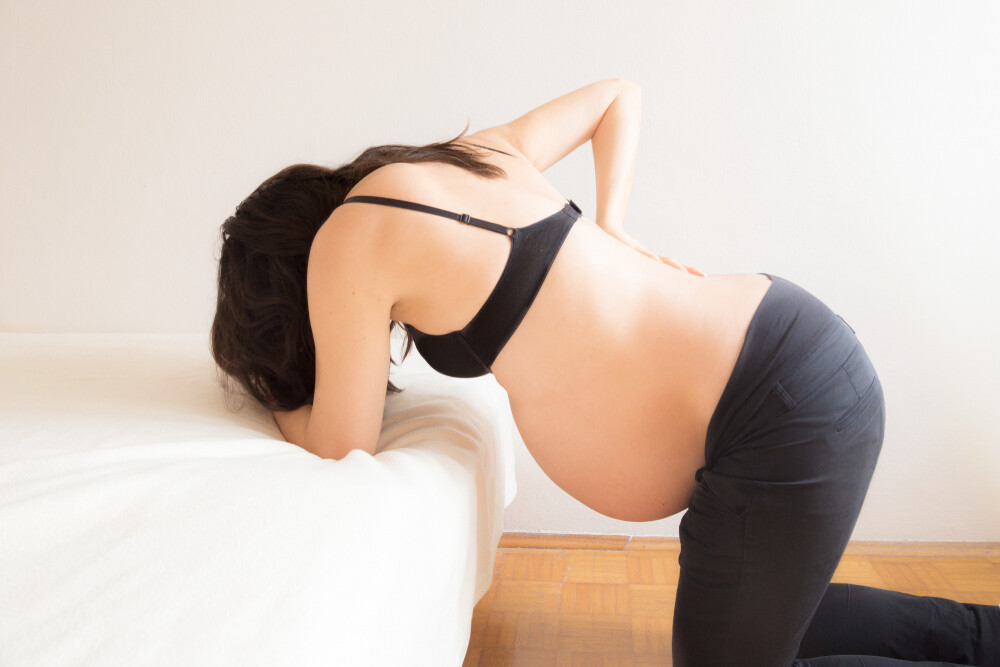You’re pregnant and your stomach gets hard every now and then? Your uterus is already preparing itself for the birth by means of active labor contractions. You can read everything you need to know about active labor here.
What are active labor contractions (pains)?
Labor contractions, also called Braxton-Hicks contractions after their discoverer, occur to most pregnant women during their pregnancy. When these contractions occur for the first time, many women worry and feel insecure. Fortunately, these worries are unfounded.
Exercising contractions are merely contractions of the uterus or, to be quite correct, of the uterine muscle. The uterus contracts and then relaxes again shortly afterwards. This contraction is not usually painful. You just notice that the abdomen gets hard. So don’t panic, everything is normal.
Practicing contractions in brief:
- serve to prepare the uterus for birth
- may occur eight to ten times a day from the second trimester of pregnancy, sometimes several times in one hour
- may be a little uncomfortable, but should not be painful
- are NOT a basic prerequisite for a good, unproblematic and also fast birth, but should not be slowed down immediately with magnesium
During pregnancy, however, the most important thing is to listen to yourself and your body. If something worries you, frightens you or seems strange to you, do not hesitate to contact your doctor or midwife – you have them to help you.
When do the contractions occur?
Most women experience their first contractions around week 20 of pregnancy and then go into down pains in the third trimester. However, as pregnancies are naturally very individual, you may feel these contractions in your stomach earlier. Especially if it is not your first baby, the baby is quite big and active, or you are expecting twins.
How do labor pains feel?
Your stomach gets hard like a football for about a minute? Then it’s an active labor! They can occur several times a day and also several times within an hour. Ten contractions a day are considered perfectly normal. However, unlike labour, Braxton-Hicks contractions do not cause the cervix to open or shorten the cervix. So you don’t have to worry about the birth starting now.
Why are you having labor pains?
Labor pains are the fitness unit that your uterus puts in regularly to prepare for the birth. And it has to be, after all the muscles are not normally used very much, but they are supposed to perform at their best during the birth. So you can give her a little training – your uterus is practicing labor.
But if you don’t have training contractions, that’s no reason to worry. Your uterus already knows what it needs – nothing stands in the way of a spontaneous birth. As with everything else in pregnancy, active labor pains vary in strength and are individually pronounced.
By the way: For this reason, midwives and doctors often advise against taking magnesium until the delivery date. Magnesium is used to reduce the contractions of the uterus and is often thoughtlessly prescribed to pregnant women. However, your uterus needs the training to give birth. After all, you do not run a marathon without preparation.
Labor contractions vs. premature contractions: This is how you can tell the difference
Now, are those labor pains, down pains or preterm labor? Many women are particularly insecure during their first pregnancy. How do the harmless Braxton Hicks contractions differ from real contractions, which in the worst case lead to premature birth?
The decisive factor here is above all the time of pregnancy. Contractions in the 26th week of pregnancy are in most cases pure training contractions, and in the last trimester they are down pains.
Contractions in the last trimester are called down pains, and they also have another important function: they ensure that your baby slides into the correct birth position. But even these contractions still have no influence on the opening of the cervix. This is in contrast to real labor pains.
If you are already in the 37th week of pregnancy and you are experiencing contractions, your baby may start a little earlier and the birth may be imminent.
This is the difference between labor contractions and birth pangs:
- Labor pains are irregular
- Even if you don’t want to hear it, but labour pains are painful. They are accompanied by pressure or pain in the back, lower abdomen partly up to the thighs
- A slightly bloody plug of mucus often comes off during labour
Are you unsure whether these are harmless training contractions or whether they are premature contractions after all? Then don’t torture yourself unnecessarily, but let your gynaecologist or midwife check it out. They can quickly take away your worries.
When should you see a doctor?
Do you have pain or other symptoms during the contractions, such as pulling in the back, thighs or abdomen, similar to menstrual cramps? If you have these complaints regularly more than eight to ten times a day, you should consult your midwife or gynaecologist if you are still before the 36th week of pregnancy. Often these contractions are also a sign that you have taken on too much. Various measures can help here:
- Get some rest
- Avoid stress and hectic
- Lie down and relax a little
- A warm shower or a cherry pit cushion in the back can alleviate the complaints
But: In case of bleeding or mucus discharge, please have the cervix checked as soon as possible, as this can be a sign that the cervix has opened.
Otherwise, just be happy that your body is already preparing so well for the birth and brings you a little bit closer to your baby every day.

